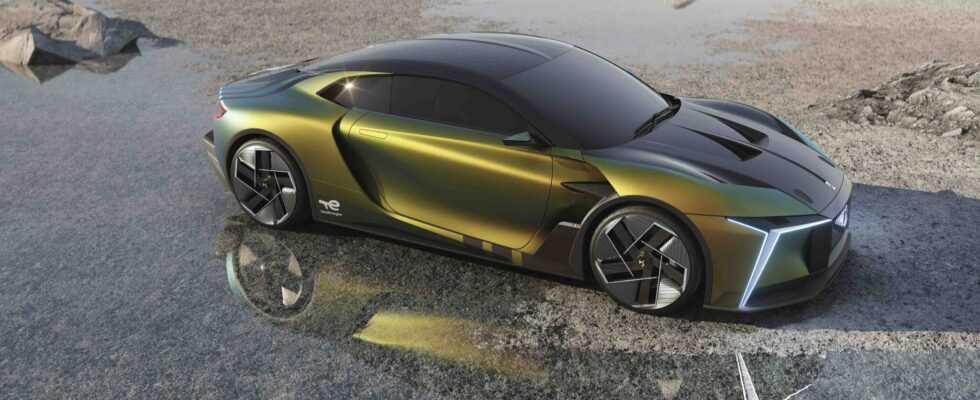A car without brake pads, can you imagine it? Research and development could however make it possible to do without it if they manage to make regenerative braking more efficient in certain situations.
And if in the future, electric cars were completely devoid of disc brakes? A concept car from the French car manufacturer DS Automobiles (formerly a premium brand belonging to Citroën, which has taken its independence but which belongs to the Stellantis group, which itself results from the merger between PSA Peugeot-Citroën and Fiat Chrysler Automobiles) gives us a insight into that future.
Bye bye disc brakes?
To brake, the DS E-TENSE PERFORMANCE can only rely on its regenerative braking capacity. As a reminder, this is a process present on all electric and hybrid cars which makes it possible to suddenly decelerate and even to come to a complete stop when the pressure on the accelerator pedal is removed.
In doing so, the battery no longer supplies the motor. But the latter remains active for a while, taking advantage of the energy generated by the vehicle’s rotor and redistributing it to the battery, which allows it to be regenerated without recharging it from an external electrical source. This is why good driving habits and so-called soft » can save a lot of energy and less drain on the battery.
Regenerative braking systems are systematically accompanied by mechanical brake pads, which today remain essential for emergency braking, when a situation cannot be anticipated. The novelty introduced by DS with its concept car is to remove the disc brakes to keep only the regenerative brake.
Can the regenerative brake alone be viable?
To do without disc brakes, the DS E-TENSE PERFORMANCE must necessarily benefit from a top-flight regenerative braking system, the likes of which have never been seen in a car marketed to the general public.
For this first attempt made public, DS relies on the presence of two on-board electric motors capable of generating a power of up to 600 kW in the deceleration and battery regeneration phase.
After laboratory experiments, the brand launched tests in real conditions with Formula E drivers. A necessary step to analyze relevant data and understand whether “ regenerative braking alone may possibly be a unique method of slowing cars down, helping to better recharge the battery in the process and doing away with conventional brake discs and pads “.
For now, we are not there yet. The technology must prove itself and be approved by the regulations, which is going to take a long time. But in a long-term view, it is quite possible that electric cars no longer need brake pads.
The disappearance of the brake pads is desirable
If it is not yet known with certainty whether the automotive industry will succeed in reinventing itself to remove disc brakes from vehicles, it appears very clearly that their removal would have many advantages.
First of all from an environmental and public health point of view. According to a British study on air quality, 55% of the pollution generated by road traffic does not come from exhaust fumes. More than half of pollutant emissions from vehicles therefore come from other factors. And among them, the particles emitted by vehicles when they brake are far from harmless.
The iron dust produced during braking would represent 20% of the harmful particles, excluding exhaust gases, which are spread in the air we breathe. In areas with heavy traffic, repeatedly breathing such polluted air can have serious consequences on the respiratory system of individuals.
We can think that in a few decades, if autonomous driving manages to develop and become the majority on the roads, emergency braking will become much less useful than today, and disc brakes will no longer will therefore be more useful. The future of regenerative braking may also be linked to autonomous driving.
Source : The Next Web

34